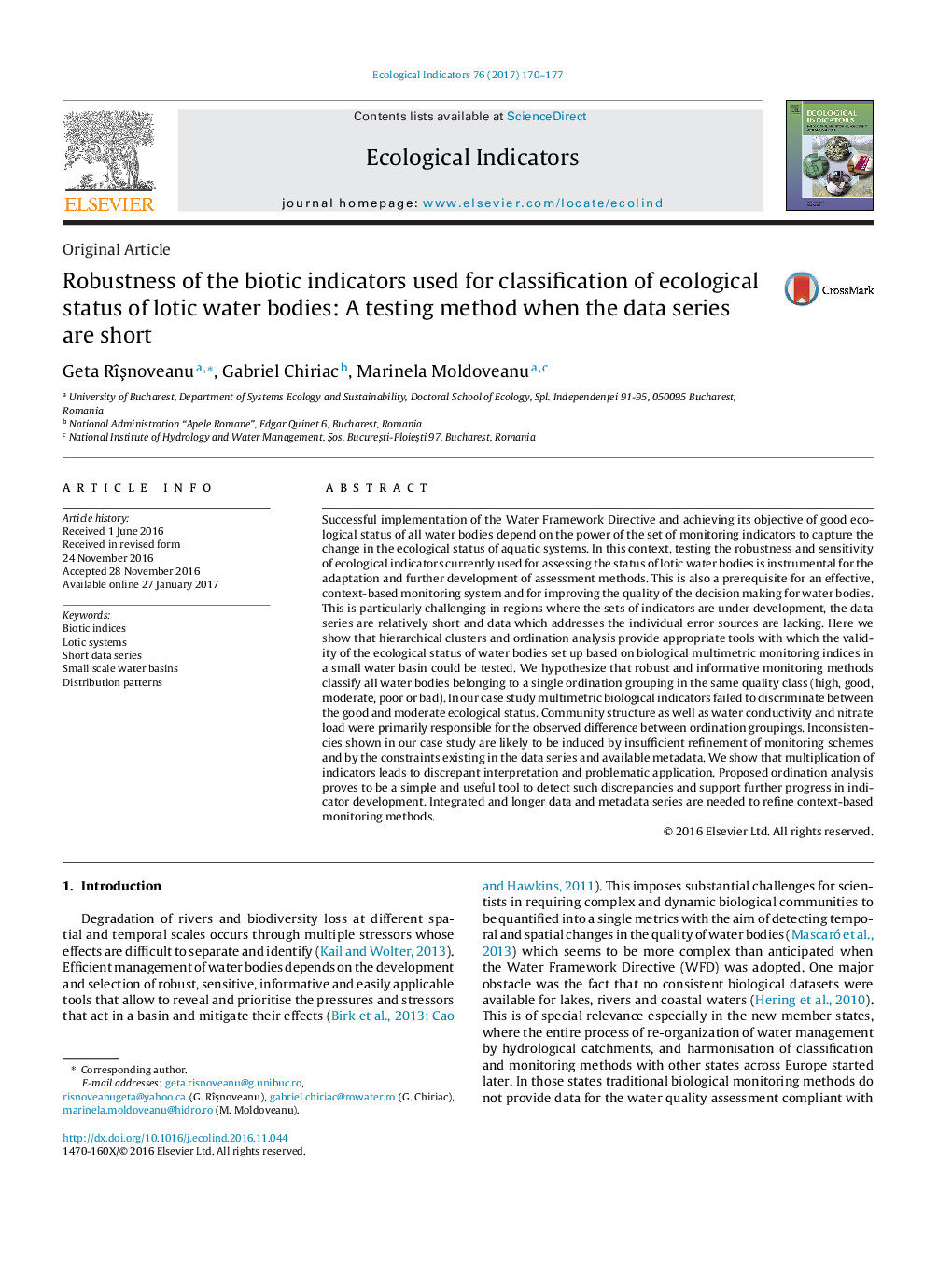| کد مقاله | کد نشریه | سال انتشار | مقاله انگلیسی | نسخه تمام متن |
|---|---|---|---|---|
| 5741681 | 1617126 | 2017 | 8 صفحه PDF | دانلود رایگان |
- Sets up ecological status based on biological multimetric monitoring indices.
- Compiles monitoring data to identify patterns in communities' distribution.
- Checks consistency between the assessed ecological status and communities patterns.
- Reveals limited reliability of the monitoring results.
- Shows a useful tool for testing the biotic indices when the data series are short.
Successful implementation of the Water Framework Directive and achieving its objective of good ecological status of all water bodies depend on the power of the set of monitoring indicators to capture the change in the ecological status of aquatic systems. In this context, testing the robustness and sensitivity of ecological indicators currently used for assessing the status of lotic water bodies is instrumental for the adaptation and further development of assessment methods. This is also a prerequisite for an effective, context-based monitoring system and for improving the quality of the decision making for water bodies. This is particularly challenging in regions where the sets of indicators are under development, the data series are relatively short and data which addresses the individual error sources are lacking. Here we show that hierarchical clusters and ordination analysis provide appropriate tools with which the validity of the ecological status of water bodies set up based on biological multimetric monitoring indices in a small water basin could be tested. We hypothesize that robust and informative monitoring methods classify all water bodies belonging to a single ordination grouping in the same quality class (high, good, moderate, poor or bad). In our case study multimetric biological indicators failed to discriminate between the good and moderate ecological status. Community structure as well as water conductivity and nitrate load were primarily responsible for the observed difference between ordination groupings. Inconsistencies shown in our case study are likely to be induced by insufficient refinement of monitoring schemes and by the constraints existing in the data series and available metadata. We show that multiplication of indicators leads to discrepant interpretation and problematic application. Proposed ordination analysis proves to be a simple and useful tool to detect such discrepancies and support further progress in indicator development. Integrated and longer data and metadata series are needed to refine context-based monitoring methods.
Journal: Ecological Indicators - Volume 76, May 2017, Pages 170-177
